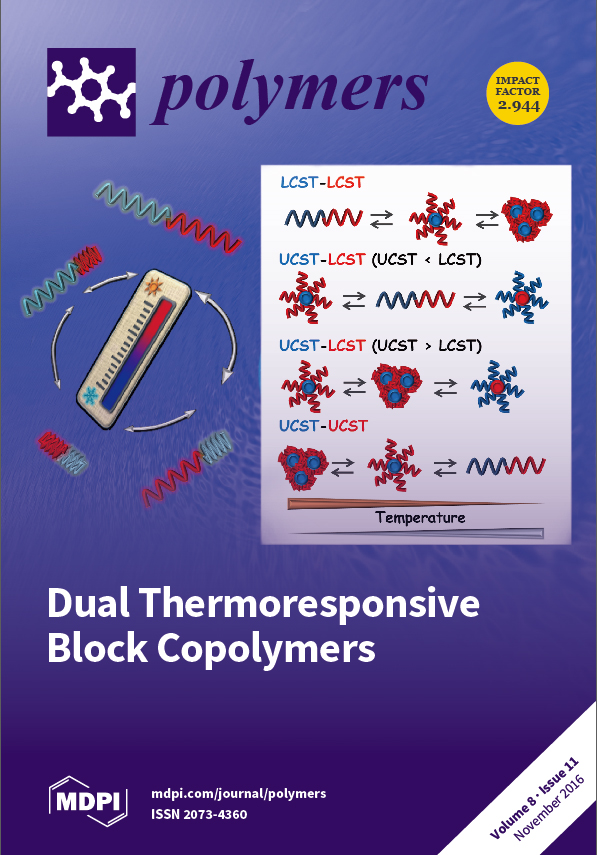A series of novel p-type conjugated copolymers, PTTVBDT, PTTVBDT-TPD, and PTTVBDT-DPP, cooperating benzo[1,2-b:4,5-b′]dithiophene (BDT) and terthiophene-vinylene (TTV) units with/without thieno[3,4-
c]pyrrole-4,6-dione (TPD) or pyrrolo[3,4-
c]pyrrole-1,4-dione (DPP) via Stille polymerization were synthesized and characterized. Copolymer PTTVBDT shows a low-lying HOMO energy level
[...] Read more.
A series of novel p-type conjugated copolymers, PTTVBDT, PTTVBDT-TPD, and PTTVBDT-DPP, cooperating benzo[1,2-b:4,5-b′]dithiophene (BDT) and terthiophene-vinylene (TTV) units with/without thieno[3,4-
c]pyrrole-4,6-dione (TPD) or pyrrolo[3,4-
c]pyrrole-1,4-dione (DPP) via Stille polymerization were synthesized and characterized. Copolymer PTTVBDT shows a low-lying HOMO energy level and ordered molecular-packing behavior. Furthermore, two terpolymers, PTTVBDT-TPD and PTTVBDT-DPP, display stronger absorption ability, alower-lying HOMO energy level, and preferred molecular orientation, due to the replacement TTV-monomer units with electron-deficient groups. Furthermore, bulk-heterojunction organic solar cells were fabricated using blends of the PTTVBDT-TPD, and PC
61BM gave the best power conversion efficiency of 5.01% under the illumination of AM 1.5G, 100 mW·cm
−2; the short circuit current (
Jsc) was 11.65 mA·cm
−2 which displayed a 43.8% improvement in comparison with the PTTVBDT/PC
61BM device. These results demonstrate a valid strategy combining the two-dimensional molecular structure with random copolymerization strikes promising conjugated polymers to achieve highly efficient organic photovoltaics.
Full article






